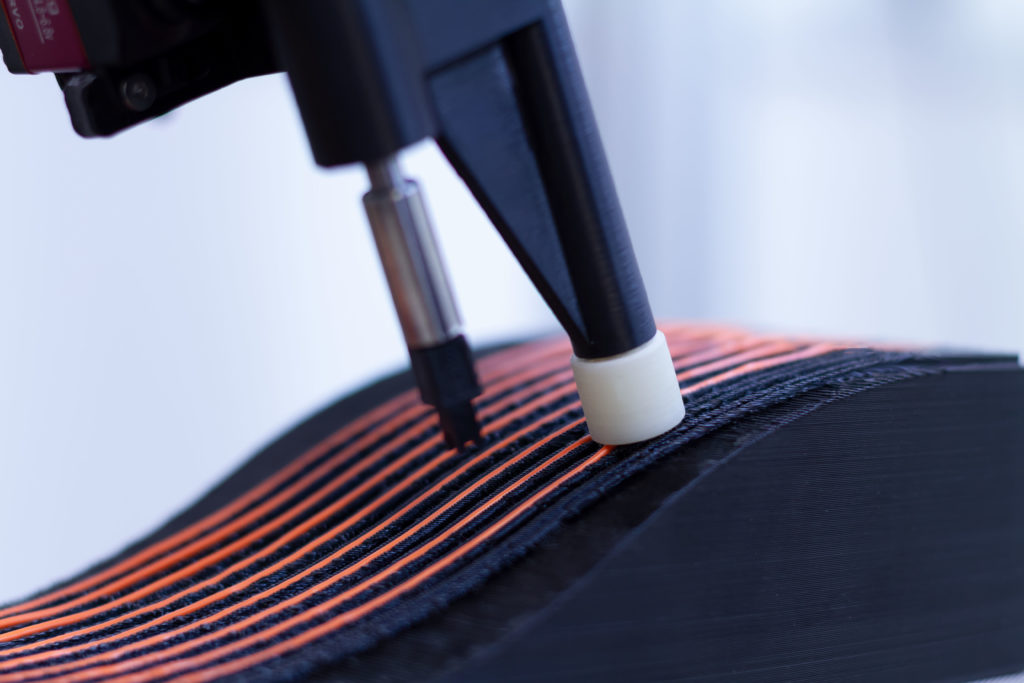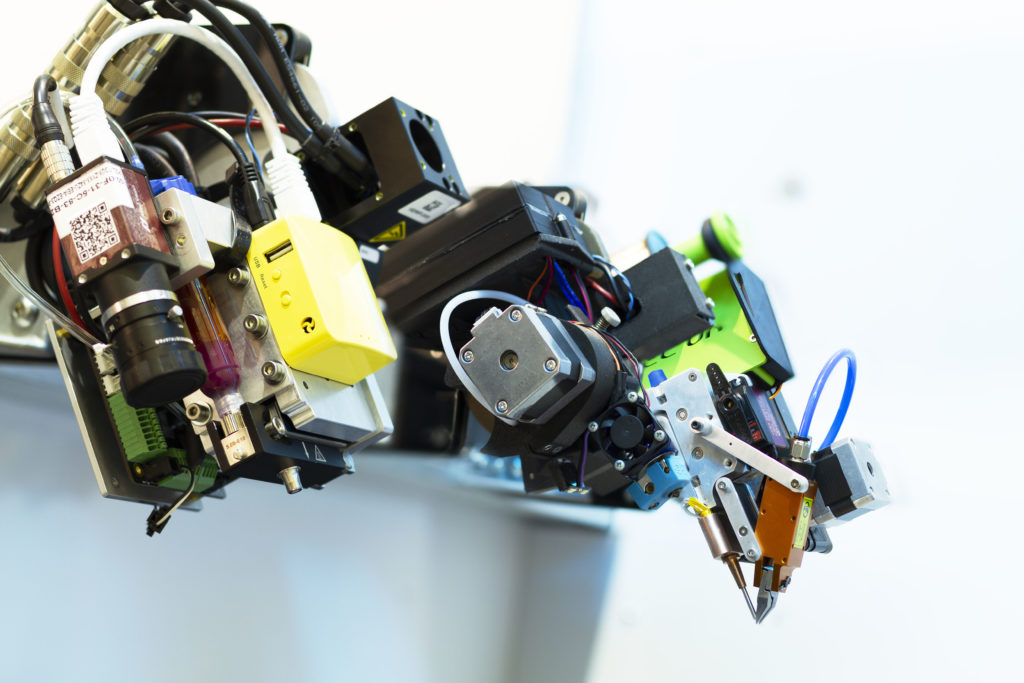Wire harness assembly has traditionally been seen as a labor-intensive step not suitable for automation. However, increasing concerns over supply chain resilience and the impact of global shocks have heightened industry and government interest in Q5D’s technology as a potential solution for automating the production of these harnesses.
Q5D develops the firmware and controls for its machines in-house, while further operations are managed by a custom implementation of Siemens NX CAD/CAM, created by Emixa. The consortium of companies has now received funding to simplify the overall workflow and user interface, a challenging task considering the wide variety of surfaces Q5D’s technology can be applied to. The diversity of operations and sequences possible adds to the complexity.
Additionally, controlling the motion stage arm is critical, as it must manage various heads that deposit different materials while moving and positioning. Ensuring this process can be repeated millions of times without error adds another layer of complexity to the system.
Q5D is collaborating with clients on various applications, such as embedding wiring in aircraft components, integrating NFC communications into objects, and wiring for car bumpers. Although gaining the trust of major automotive and aerospace industries may take time, the company is addressing a significant market, largely unchallenged by competitors. The lack of competition is surprising, especially when considering the vast potential applications, such as equipping every lamppost worldwide with sensors or enhancing internet connectivity in cars and phones through additional antennas. These advancements are increasingly likely as the demand for smarter, more connected environments grows.
The opportunity for the conformal placement of sensors and 3D printed components is substantial, yet currently, there are no complete automation solutions for many of these tasks. As the world moves towards greater connectivity and sensor integration, the necessity to equip millions of items with these technologies will escalate. This substantial market opportunity appears to be overlooked, suggesting that more attention should be directed towards this sector, anticipating more market entrants in the future.
Subscribe to Our Email Newsletter
Stay up-to-date on all the latest news from the 3D printing industry and receive information and offers from third party vendors.
You May Also Like
Model No. Deploys Titan Pellet 3D Printers for Sustainable Furniture Production
Over the years, many designers have tried to create 3D printed polymer furniture. Early pioneers like Janne Kyttanen, Materialise’s MGX, and Joris Laarman have led the way with 3D printed...
3D Printing News Unpeeled: Recycling PLA, More Efficient Atomizing
Filamentive hopes to recycle your PLA if you’re in the UK and order over £500 worth of filament. Their partner 3D Printing Waste (3DPW) will turn the PLA into injection...
Lighting the Way with Potato Starch: Sustainable Polish ECO Lamps Use 3D Printing
Lighting that meets the essence of nature: this is the reality brought to life by ECO Lamps, which introduces a fresh perspective to sustainable lighting design using potato starch. These...
3D Printing News Unpeeled: 3D Printed Construction Standard, Sand Wall & Self Heating Microfluidics
ISO/ASTM Standard 52939:2023 has been released and it sets standards for QA for 3D Printed polymer, composite and cement buildings. This is most welcome since 3D printed construction is a...


































